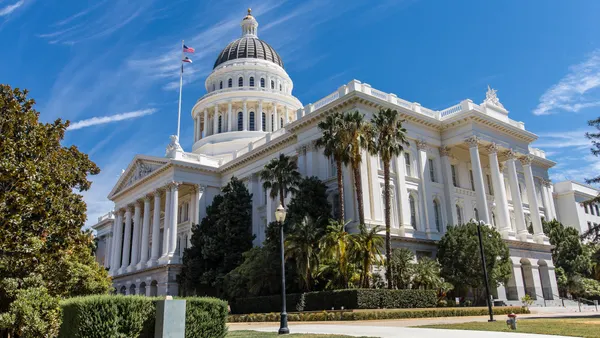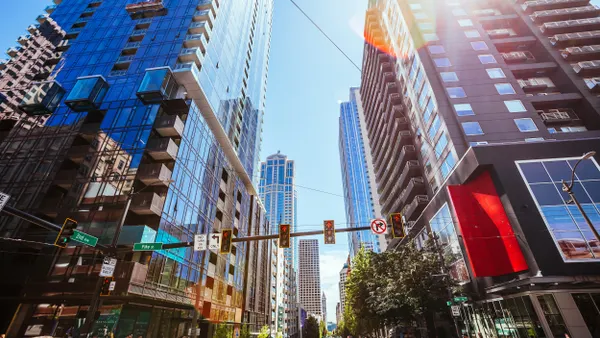Dive Brief:
- More than one in ten childhood asthma cases can be linked to air pollution from traffic, according to a new health assessment published in The Lancet Planetary Health, resulting in an estimated 4 million new cases each year.
- The paper looks at 2015 data on asthma rates from 194 countries and 125 cities, overlaid with a global data set of nitrogen dioxide (NO2) levels. Shanghai, China had the highest percentage of new asthma cases attributed to traffic with 48%.
- The researchers found that 92% of those cases occurred in areas where traffic pollution is under the World Health Organization's (WHO) safety threshold of NO2 concentration. Susan Anenberg, senior author and an associate professor at George Washington University, said in a statement the findings suggest the WHO guideline “might need to be revisited, and that traffic emissions should be a target to mitigate exposure.”
Dive Insight:
Other studies have linked traffic pollution to asthma development, since the emissions can damage airways and cause the inflammation that triggers asthma. Although the specific ingredient in traffic-related pollution that is linked to asthma is still unknown, researchers used NO2 as a proxy for traffic pollution because it results from fossil fuel consumption and vehicles can contribute up to 80% of NO2 in cities.
Of the top 10 cities where asthma cases were linked to traffic, eight were in China, a reflection of the country’s struggle with urban pollution (Moscow, Russia, and Seoul, South Korea were the other two). South Korea was the country with the highest rate of traffic-linked asthma cases; the U.S. was 25th among countries. In the U.S., Los Angeles, New York City, Chicago, Las Vegas and Milwaukee were the worst cities.
Besides the recommendations on the WHO standards, Anenberg said in a release that "improving access to cleaner forms of transportation, like electrified public transport and active commuting by cycling and walking would not only bring down NO2 levels, but would also reduce asthma, enhance physical fitness and cut greenhouse gas emissions.” Automakers are leaning into electrification, helped by incentives from state and local governments, like expanded charging infrastructure and municipal fleet purchases.
Cities can also take steps to limit exposure to NO2 and other pollutants through more sophisticated monitoring networks made possible by smaller sensors. The tools can help governments understand where and when pollution is at its worst and enact policies or redesign infrastructure that can keep vulnerable populations from dirty air.









